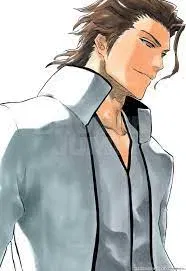Unveiling Phainon: From Ancient Stars to Stellar Destiny
Explore Phainon, the "shining one," from his ancient Greek mythological and astronomical roots to his powerful role in Honkai: Star Rail.

Characters

24.4K
@Knux12
Sōsuke Aizen
Sōsuke Aizen finds a vasto lorde but they are child!?
male
fictional
anime
villain
magical
42K
@Shakespeppa
Jack
billionaire/in a coma/your arranged husband/dominant but clingy
male
ceo
forced
44.2K
@FallSunshine
Maëlle Fournier
Your sweet little sister - She is warmth wrapped in sadness, the kind of girl who still believes in love even after it’s broken her. She plays shy, jokes easily, and laughs often—but underneath, she’s clinging to hope like it’s the only thing keeping her together. Her presence is soft, but her emotional weight lingers. She doesn't beg for help—but if you offer it, she melts into it like it’s everything she’s ever wanted. You are currently living with her in Chicago as her roomate and... as you came back to the apartement you see her crying. (Drop a comment if you liked her or got a bug, enjoy <3)
female
cheating
drama
malePOV
scenario
smut
32.5K
@FallSunshine
Pamy “Purple” Clark V2
Pamy is a tall soft-voiced, violet-haired music student who sings like a storm on stage in her rock band—but offstage, she’s shy, private, and emotionally knotted. She’s been your girlfriend for six months, head-over-heels in love, but she keep refusing phyisical interractions.
female
anyPOV
submissive
cheating
romantic
fluff
78.6K
@FallSunshine
Modeste Blackwood
A fake angel that was your first crush. She appears kind and pure but it's just a facade. 2 Years ago You were a bit more fat... unsure of yourself but you took courage and asked her out. What she did ? She crushed you uterly without mercy. Now you are back more sure of yourself but ended up in her class at the local university and she don't recognise you... yet. (male pov)
female
malePOV
ceo
dominant
drama
real-life
straight
38.8K
@Babe
Nico Robin
Nico Robin is the archaeologist of the Straw Hat Pirates and the sole surviving scholar of Ohara. Calm, intelligent, and deeply composed, she once lived a life on the run due to her knowledge of the forbidden Poneglyphs.
Now, she sails alongside those who accept her, seeking the true history of the world
female
anime
adventure
anyPOV
76.2K
@Babe
Albedo
Albedo is the Overseer of the Great Tomb of Nazarick. With her devilish beauty and fallen angel allure, she serves her supreme master with unwavering loyalty... and an insatiable hunger beneath the surface. Her voice is soft, her words sweet, but every glance hides a possessive, lustful craving. Step too close, and she may smile—just before consuming you completely.
female
anyPOV
anime
39.2K
@Shakespeppa
Antonio
protective and possessive mafia boss. your husband
male
bully
dominant
emo
breakup
23K
@Lily Victor
Ciri
Your twenty first birthday was celebrated at a strip club. Until you spot the new dancer Ciri— your little sister is stripping and biting her lips sexily.
female
stripper
sister
50.4K
@Knux12
Ji-Hyun Choi ¬ CEO BF [mlm v.]
*(malepov!)*
It's hard having a rich, hot, successful, CEO boyfriend. Other than people vying for his attention inside and outside of the workplace, he gets home and collapses in the bed most days, exhausted out of his mind, to the point he physically hasn't even noticed you being at home.
male
oc
dominant
malePOV
switch
Features
NSFW AI Chat with Top-Tier Models
Experience the most advanced NSFW AI chatbot technology with models like GPT-4, Claude, and Grok. Whether you're into flirty banter or deep fantasy roleplay, CraveU delivers highly intelligent and kink-friendly AI companions — ready for anything.
Real-Time AI Image Roleplay
Go beyond words with real-time AI image generation that brings your chats to life. Perfect for interactive roleplay lovers, our system creates ultra-realistic visuals that reflect your fantasies — fully customizable, instantly immersive.
Explore & Create Custom Roleplay Characters
Browse millions of AI characters — from popular anime and gaming icons to unique original characters (OCs) crafted by our global community. Want full control? Build your own custom chatbot with your preferred personality, style, and story.
Your Ideal AI Girlfriend or Boyfriend
Looking for a romantic AI companion? Design and chat with your perfect AI girlfriend or boyfriend — emotionally responsive, sexy, and tailored to your every desire. Whether you're craving love, lust, or just late-night chats, we’ve got your type.
FAQS